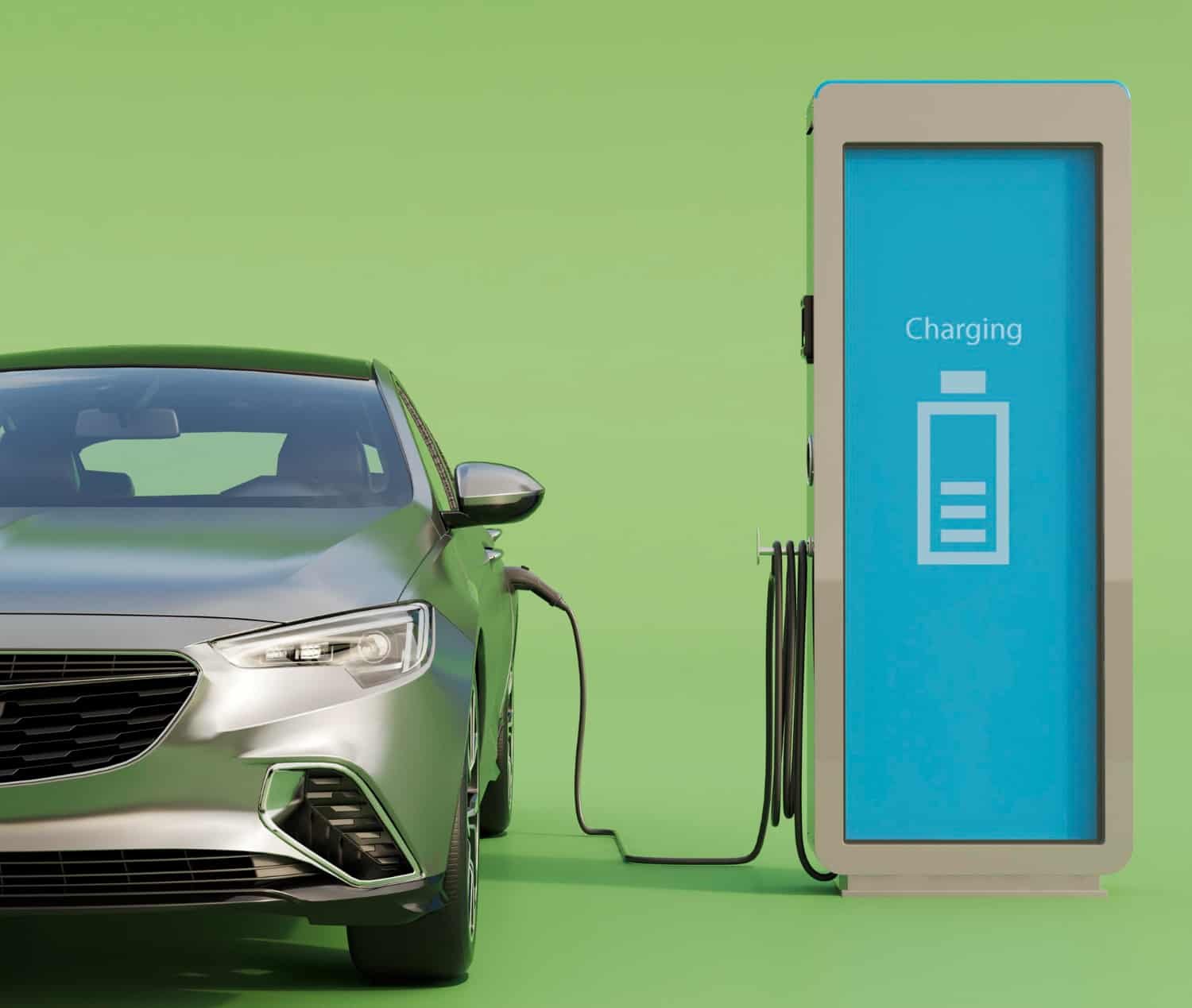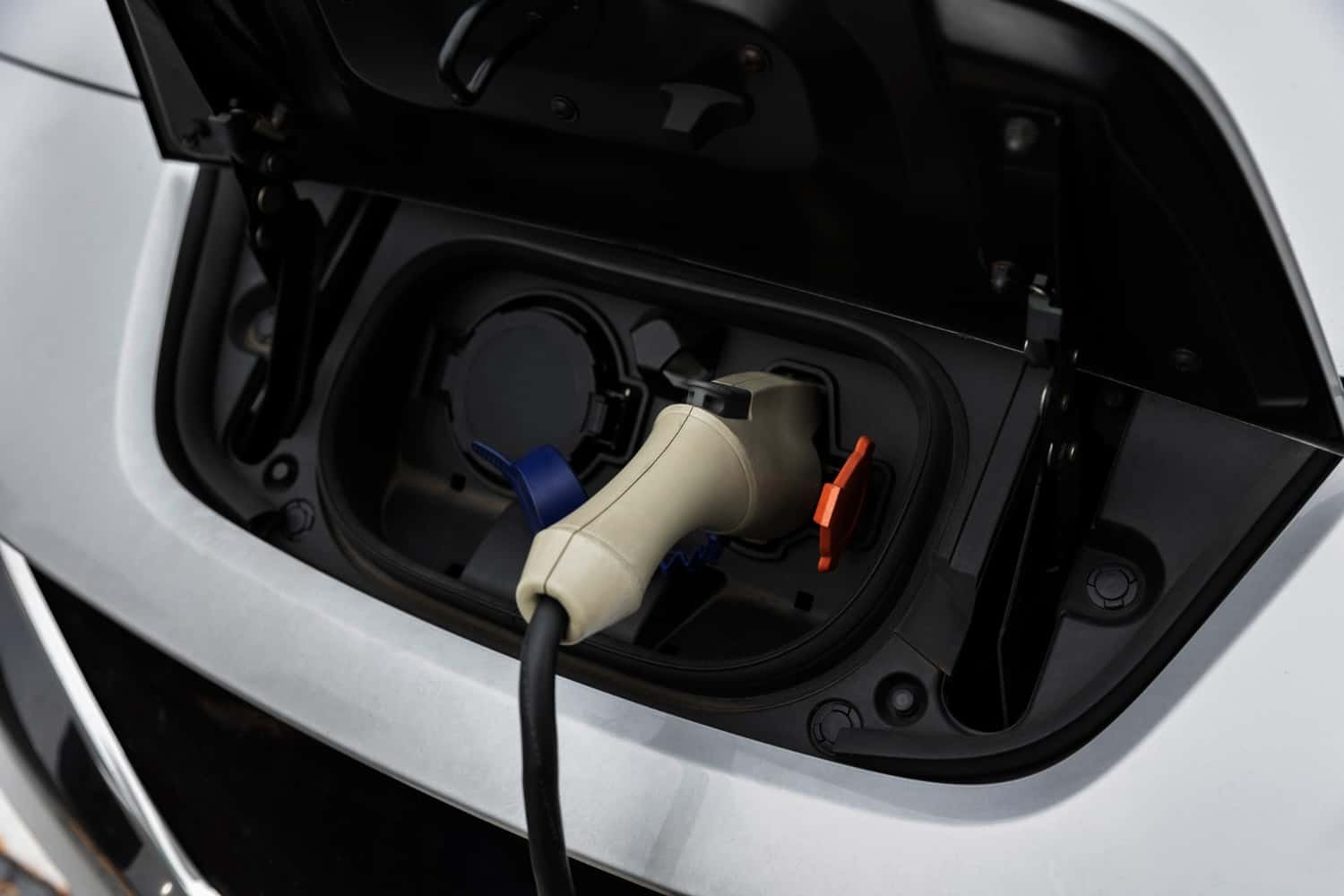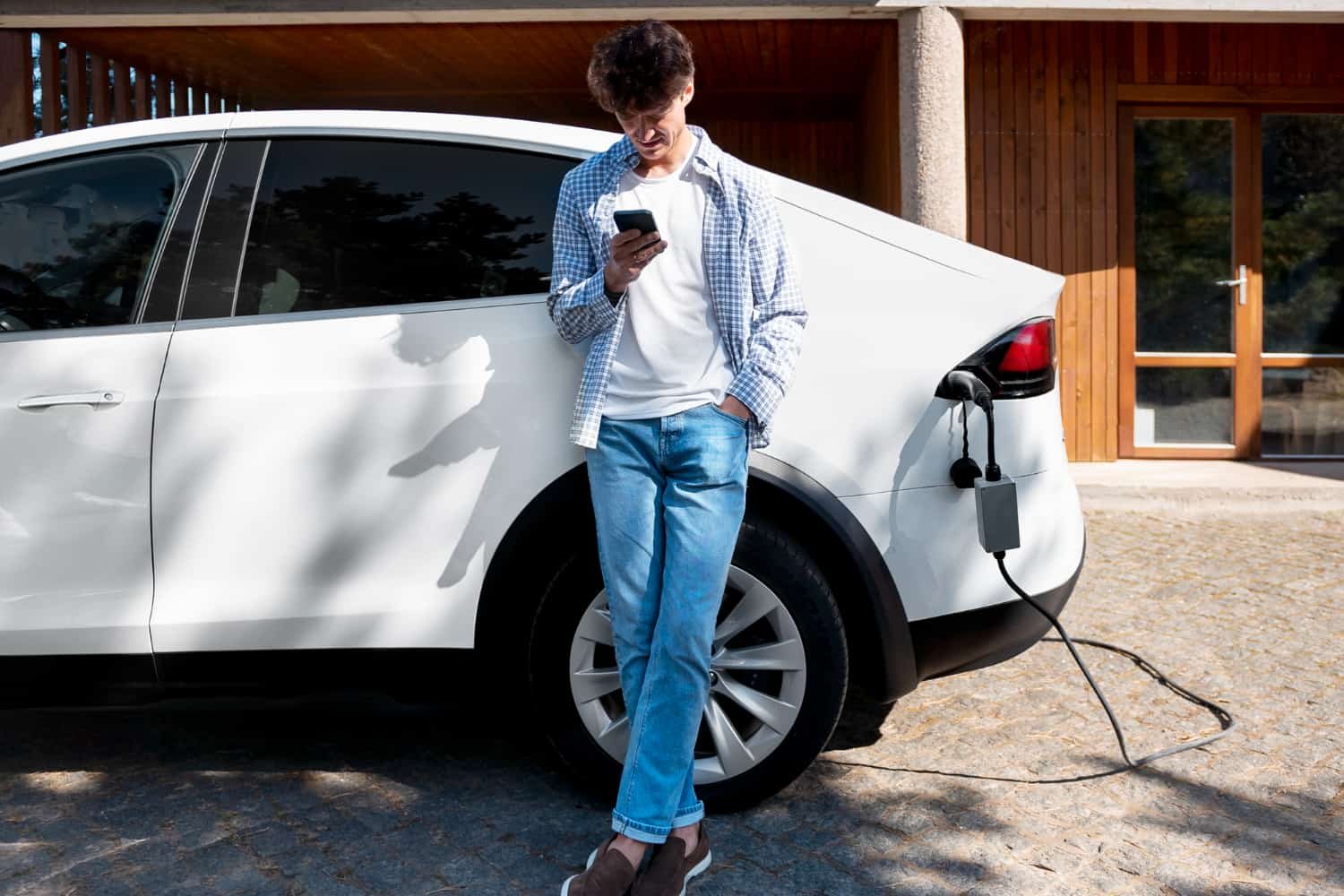Electric vehicles have come a long way since their inception, but there is still one major hurdle that needs to be overcome: range anxiety. Drivers are hesitant to switch to electric vehicles because they fear they will run out of power before reaching their destination. However, advancements in battery technology are changing the game.
The race for longer-range electric vehicle batteries is on, with manufacturers and researchers working tirelessly to create batteries that can go further on a single charge. The holy grail is a battery that is safer, costs less, provides longer driving range, and doesn’t use imported “conflict” minerals. Companies like Toyota and BMW are investing billions in research and development to create solid-state batteries that could potentially double the range of current lithium-ion batteries. Meanwhile, startups like QuantumScape and Sila Nanotechnologies are also making strides in solid-state battery technology.
Advancements in Electric Vehicle Batteries
As the push for a cleaner future continues, advancements in electric vehicle (EV) batteries have become a key focus for automakers and battery manufacturers. Battery technology has come a long way since the first EVs hit the market, and new developments promise even longer range and improved safety.
Battery Technology
The most common type of EV battery is the lithium-ion battery, which has been used in EVs for over a decade. However, there are ongoing efforts to improve the performance of these batteries, including increasing their energy density and reducing the amount of expensive and environmentally harmful materials like cobalt and nickel used in their production.
Some automakers are also exploring alternative battery chemistries, such as lithium iron phosphate (LFP) and solid-state batteries, which offer different advantages and disadvantages compared to traditional lithium-ion batteries.
Solid-State Batteries
Solid-state batteries are an emerging technology that could revolutionize the EV market. These batteries use a solid electrolyte instead of a liquid electrolyte, which offers several advantages, including higher energy density, faster charging times, and improved safety.
Several automakers and battery manufacturers, including Toyota, LG, and Ford, are investing heavily in solid-state battery research and development. However, these batteries are still in the early stages of development and face several technical and logistical challenges before they can be mass-produced.
Supply Chain
The supply chain for EV batteries is complex and involves several critical minerals, including lithium, cobalt, and graphite. These minerals are often sourced from countries with poor labor and environmental standards, such as the Democratic Republic of Congo, and there are concerns about child labor and other unethical practices in the mining industry.
To address these concerns, some automakers and battery manufacturers are exploring ways to improve the sustainability and ethical standards of their supply chains, including increasing the use of recycled materials and sourcing critical minerals from more environmentally friendly mines.
Overall, advancements in battery technology and the EV market are promising for the future of transportation. However, there are still several challenges that need to be addressed, including the sustainability of the battery supply chain, the safety and efficiency of EVs, and the need for tax credits and other incentives to encourage the widespread adoption of EVs.
Increasing Range
As electric vehicles (EVs) become more popular, one of the biggest challenges is increasing their range. In this section, we’ll explore two key factors that are helping to increase EV range: energy density and anodes.
Energy Density
Energy density is a measure of how much energy can be stored in a given volume or mass. In the case of EV batteries, higher energy density means that more energy can be stored in the same amount of space or weight. This is important because it allows EVs to travel further on a single charge.
One way to increase energy density is to use materials with higher energy storage capacity. For example, lithium-ion batteries are currently the most common type of battery used in EVs because they have a high energy density. However, researchers are exploring other materials, such as solid-state batteries, which could potentially have even higher energy densities.
Another way to increase energy density is to improve the battery’s design. For example, some companies are developing “structural batteries” that use the battery itself as a structural component of the vehicle. This can help reduce the weight of the vehicle, which in turn increases its range.
Anodes
The anode is one of the two electrodes in a battery, and it plays a critical role in determining the battery’s performance. One way to increase the range of EVs is to improve the anode.
Currently, most EV batteries use graphite as the anode material. However, researchers are exploring other materials, such as silicon, that could potentially increase the energy density of the battery. Silicon has a much higher energy storage capacity than graphite, but it also has some drawbacks, such as a tendency to expand and contract during charging and discharging cycles. Researchers are working to overcome these challenges and develop anodes that can take advantage of silicon’s high energy density.
In conclusion, increasing the range of EVs is a critical challenge that researchers and engineers are working to address. By improving energy density and anodes, they are making progress toward longer-range EVs that can help reduce our dependence on fossil fuels.
Solid-State Batteries
Solid-state batteries are a promising advancement in electric vehicle (EV) battery technology. Compared to traditional lithium-ion batteries, solid-state batteries have the potential to offer higher energy density, faster charging times, and increased safety.
Solid-State Cell
Solid-state cells use a solid electrolyte instead of the liquid electrolyte found in traditional lithium-ion batteries. This solid electrolyte allows for higher energy density and faster charging times, as it can conduct ions more efficiently than liquid electrolytes. Additionally, solid-state cells have the potential to be safer than traditional lithium-ion cells, as they are less prone to leaking or catching fire.
Solid Electrolyte
The solid electrolyte used in solid-state batteries can be made from a variety of materials, including ceramics, sulfides, and polymers. Each material has its own advantages and disadvantages, such as cost, performance, and stability. For example, ceramic electrolytes offer high stability and conductivity, but can be brittle and difficult to manufacture. Sulfide electrolytes offer high conductivity and low cost, but can be unstable and degrade over time.
Overall, solid-state batteries are still in the early stages of development, and there are many challenges that need to be overcome before they can be widely adopted in EVs. However, with continued research and development, solid-state batteries have the potential to revolutionize the EV industry and offer longer range, faster charging, and increased safety.
Supply Chain
The supply chain for electric vehicle (EV) batteries is complex and involves multiple entities, including suppliers, manufacturers, and recyclers. The supply chain is critical for ensuring the availability of sustainable and high-quality batteries for EVs.
Suppliers
Suppliers play a crucial role in the EV battery supply chain. They provide the raw materials, such as lithium, cobalt, and nickel, needed to produce the batteries. The availability and cost of these materials can impact the production and pricing of EV batteries.
To ensure a sustainable and responsible supply chain, some companies are working to source materials from ethical and environmentally friendly suppliers. For example, some suppliers are implementing responsible mining practices and reducing their carbon footprint.
Recycle
The recycling of EV batteries is an essential part of the supply chain. Recycling helps to reduce waste and recover valuable materials, such as lithium and cobalt, that can be reused in new batteries.
Several companies are investing in battery recycling technology to improve the efficiency and effectiveness of the recycling process. For example, some companies are developing closed-loop recycling systems that allow for the recovery of up to 95% of the materials used in the battery.
Overall, the supply chain for EV batteries is complex and involves multiple entities working together to ensure the availability of sustainable and high-quality batteries for EVs. By sourcing materials responsibly and investing in recycling technology, the industry can work towards a more sustainable and circular supply chain.
Environmental Impact
Electric vehicles (EVs) are seen as a more environmentally friendly alternative to traditional gasoline-powered vehicles. However, the production of EV batteries has its own environmental impact. In this section, we will explore the carbon footprint and child labor concerns associated with the production of EV batteries.
Carbon Footprint
The production of EV batteries requires a significant amount of energy, which contributes to their carbon footprint. According to a report by McKinsey, the global average of greenhouse gases (GHGs) from battery production could decline to 85 kg CO2e/kWh by 2025 assuming the global push towards decarbonizing electricity grids continues, including in China.
However, the report also notes that the carbon footprint of battery production varies depending on the materials used. For example, the production of batteries using lithium, cobalt, and nickel has a higher carbon footprint compared to batteries using iron, phosphate, and manganese. Companies are actively working to reduce the carbon footprint of battery production by investing in renewable energy sources and developing more efficient production methods.
Child Labor
Child labor is a concern in the production of EV batteries, particularly in countries where the raw materials for batteries are sourced. For example, cobalt is a key component in the production of batteries, and the Democratic Republic of Congo (DRC) is the world’s largest producer of cobalt. Unfortunately, child labor is prevalent in cobalt mines in the DRC.
Companies are taking steps to address child labor in their supply chains. For example, Tesla has committed to only sourcing cobalt from mines that meet responsible sourcing standards, and Apple has implemented a child labor monitoring program for its cobalt supply chain.
Russia
Russia is one of the largest producers of nickel, which is a key component in the production of batteries. The country is also investing in the development of its own EV battery industry. In 2021, Russian energy company Rosatom announced plans to build a large-scale battery production plant. The plant is expected to produce batteries for electric vehicles and stationary energy storage systems.
While Russia’s investment in the EV battery industry could help reduce the carbon footprint of battery production by reducing transportation emissions, it is important to monitor the environmental impact of the production process and ensure that responsible sourcing standards are met.
Policy and Incentives
The adoption of electric vehicles (EVs) is a key component in the transition to a low-carbon transportation system. Governments around the world have implemented policies and incentives to encourage the growth of the EV market. In the United States, the federal government and some states offer tax credits to incentivize the purchase of electric vehicles.
Tax Credit
The federal government provides a tax credit of up to $7,500 for the purchase of a new electric vehicle. The amount of the credit is based on the battery capacity and the manufacturer. Once a manufacturer sells 200,000 electric vehicles, the tax credit begins to phase out. Tesla and General Motors have already reached this threshold, and their tax credits have been reduced. Other manufacturers, such as Ford and Nissan, still have the full tax credit available.
State-level incentives for electric vehicles vary widely. Some states offer additional tax credits or rebates, while others provide access to high-occupancy vehicle (HOV) lanes or free parking. California, which has the largest EV market in the United States, offers a rebate of up to $2,500 for the purchase or lease of an electric vehicle.
Table 1 below summarizes the federal tax credit and state-level incentives for electric vehicles in select states.
Table 1: Federal Tax Credit and State-Level Incentives for Electric Vehicles
| State | Federal Tax Credit | State-Level Incentives |
|---|---|---|
| California | Up to $7,500 | Rebate up to $2,500 |
| New York | Up to $7,500 | Rebate up to $2,000 |
| Colorado | Up to $7,500 | Tax credit up to $4,000 |
| Massachusetts | Up to $7,500 | Rebate up to $2,500 |
In addition to tax credits and rebates, some states and local governments have implemented policies to encourage the installation of public charging infrastructure. For example, California requires new construction to include charging stations, and some cities offer grants to businesses that install charging stations.
Overall, the availability of policies and incentives can significantly impact the adoption of electric vehicles. The federal tax credit and state-level incentives can make electric vehicles more affordable and accessible to consumers, while policies that support charging infrastructure can increase the convenience of owning an electric vehicle.
Competition and Market
The race to develop longer-range electric vehicle batteries is heating up as automakers compete to meet consumer demand for vehicles with extended driving ranges. In this section, we will take a closer look at the competition and market for electric vehicle batteries.
Automakers
Automakers are investing heavily in the development of electric vehicle batteries to stay competitive in the market. Ford, for example, has announced the release of the F-150 Lightning, an all-electric pickup truck with a range of up to 300 miles. Volkswagen has also announced plans to invest $86 billion in electric vehicles and batteries by 2025. Tesla, the electric vehicle pioneer, has been at the forefront of battery technology for years, and continues to lead the market with its Model S Plaid, which boasts a range of over 390 miles.
Other automakers, such as Lordstown, General Motors, Mercedes-Benz, and BMW, are also investing in battery technology to stay competitive in the market. Lordstown, for example, has announced the development of the Endurance, an all-electric pickup truck with a range of up to 250 miles. General Motors has also announced the release of the Hummer EV, an all-electric SUV with a range of up to 350 miles.
EV Market
The electric vehicle market is growing rapidly, with consumers increasingly interested in vehicles with longer driving ranges. According to a recent report by BloombergNEF, electric vehicles are expected to reach price parity with gasoline-powered vehicles by 2025. As the cost of electric vehicles continues to decrease, and the driving range continues to increase, electric vehicles are becoming more attractive to consumers.
The demand for electric vehicles is also being driven by government policies aimed at reducing greenhouse gas emissions. In the United States, for example, President Biden has set a goal of having 50% of all new vehicles sold be electric by 2030. This goal is driving automakers to invest in electric vehicle technology and battery development to meet the growing demand for electric vehicles.
In conclusion, the competition and market for electric vehicle batteries is rapidly evolving as automakers invest in battery technology to meet consumer demand for vehicles with longer driving ranges. As the cost of electric vehicles continues to decrease, and the driving range continues to increase, we can expect to see continued growth in the electric vehicle market.
Future of Electric Vehicles
The future of electric vehicles is promising, as advancements in battery technology, hybrid vehicles, and zero-emission vehicles continue to push the boundaries of what’s possible.
Battery Technologies
Battery technologies are at the forefront of the race for longer-range electric vehicles. Solid-state batteries, for example, are being developed to replace traditional lithium-ion batteries, which can be heavy and have limited energy density. Solid-state batteries can potentially offer higher energy density, faster charging times, and increased safety. Automakers such as Toyota and BMW are investing heavily in solid-state battery research, and it’s expected that these batteries will be available in electric vehicles in the near future.
Another promising technology is the use of silicon anodes in lithium-ion batteries. Silicon anodes can potentially increase energy density by up to 30%, which could lead to longer-range electric vehicles. Companies such as Tesla and Panasonic are already using silicon anodes in their batteries, and it’s expected that other automakers will follow suit.
Hybrid Vehicles
Hybrid vehicles are another area of focus in the future of electric vehicles. Hybrid vehicles combine an electric motor with a traditional gasoline engine, which can lead to increased fuel efficiency and reduced emissions. Automakers such as Toyota and Honda have been leaders in hybrid vehicle technology, and it’s expected that other automakers will continue to invest in this area.
Zero-emission Vehicles
Zero-emission vehicles, such as hydrogen fuel cell vehicles, are also being developed as a potential replacement for traditional gasoline-powered vehicles. Hydrogen fuel cell vehicles use hydrogen as a fuel source and emit only water vapor as a byproduct. Automakers such as Toyota and Honda have already released hydrogen fuel cell vehicles, and it’s expected that other automakers will follow suit.
In conclusion, the future of electric vehicles is bright, as advancements in battery technology, hybrid vehicles, and zero-emission vehicles continue to push the boundaries of what’s possible. As these technologies continue to develop, it’s likely that electric vehicles will become more accessible and practical for everyday use in the nearest future.




